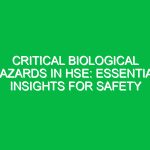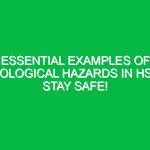# Preventing Heart Attacks: Essential Tips for a Healthy Workforce
Welcome, team! Today, we are going to discuss a crucial topic that directly impacts our health and safety in the workplace: preventing heart attacks. It’s essential to understand the risks associated with heart attacks and how we can take proactive steps to minimize these risks. Let’s dive into the key aspects of heart attacks and explore practical tips to keep our workforce healthy and safe.
## Understanding Heart Attacks
A heart attack, also known as a myocardial infarction, occurs when blood flow to a part of the heart is blocked for an extended period, leading to damage or death of the heart muscle. This blockage is often caused by a buildup of plaque in the coronary arteries, restricting blood flow. Heart attacks can have severe consequences, including chest pain, shortness of breath, and in severe cases, death.
## Risks and Hazards
Several factors can increase the risk of heart attacks, such as smoking, high blood pressure, diabetes, obesity, and a sedentary lifestyle. In the workplace, stress, long hours, poor ergonomics, and exposure to hazardous materials can also contribute to heart health issues. It’s crucial to identify these risks and take proactive measures to mitigate them.
## Importance of Prevention
Preventing heart attacks is not only vital for individual health but also for maintaining a safe and productive workforce. By promoting heart health and wellness initiatives, we can reduce absenteeism, improve productivity, and create a positive work environment. Investing in preventive measures can save lives and enhance overall well-being.
## Best Practices for Heart Health
### 1. Maintain a Healthy Lifestyle
– Eat a balanced diet rich in fruits, vegetables, whole grains, and lean proteins.
– Engage in regular physical activity, such as walking, jogging, or cycling.
– Avoid smoking and limit alcohol consumption.
– Manage stress through relaxation techniques, mindfulness, or counseling.
### 2. Regular Health Screenings
– Schedule regular check-ups with your healthcare provider to monitor blood pressure, cholesterol levels, and overall heart health.
– Follow recommended screenings for diabetes, obesity, and other risk factors.
### 3. Workplace Wellness Programs
– Participate in workplace wellness programs that promote physical activity, healthy eating, and stress management.
– Take advantage of resources such as health screenings, fitness classes, and ergonomic assessments.
### 4. Emergency Response Training
– Learn basic first aid and CPR techniques to respond effectively in case of a heart attack emergency.
– Ensure that AEDs (automated external defibrillators) are accessible and employees are trained in their use.
## Compliance and Regulations
It’s essential to comply with relevant health and safety regulations and company policies related to heart health. By following guidelines and protocols, we can create a safer working environment and reduce the risk of heart-related incidents. Compliance not only ensures legal obligations but also protects the well-being of our team members.
## Conclusion
In conclusion, preventing heart attacks is a shared responsibility that requires a proactive approach to health and safety. By implementing best practices, participating in wellness programs, and staying informed about heart health, we can reduce the risk of heart attacks and promote a healthy workforce. Remember, your health matters, and by taking care of yourself, you’re also contributing to a safer work environment for everyone.
Thank you for your attention and commitment to safety. Let’s prioritize our heart health and work together to create a workplace that values well-being and prevention. Stay safe and take care of your heart!


